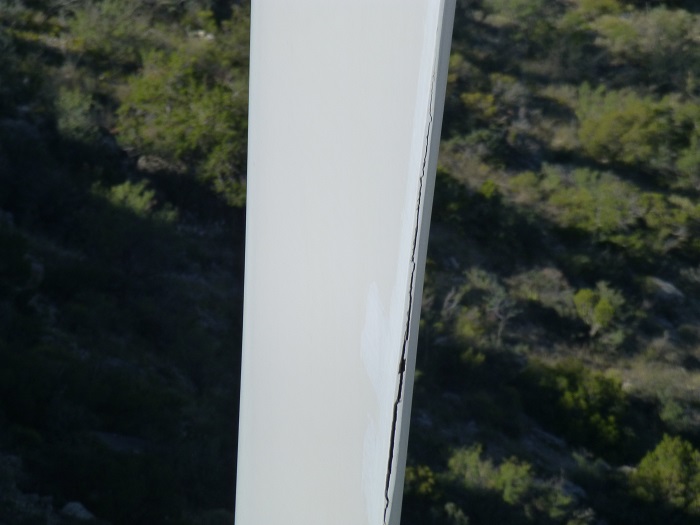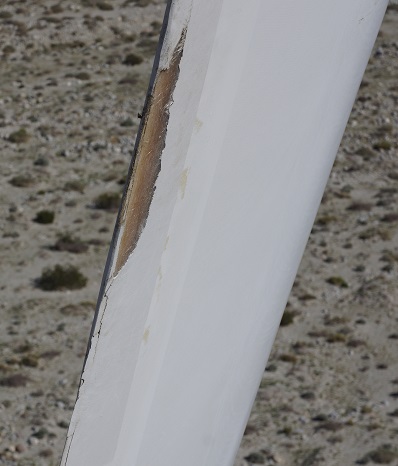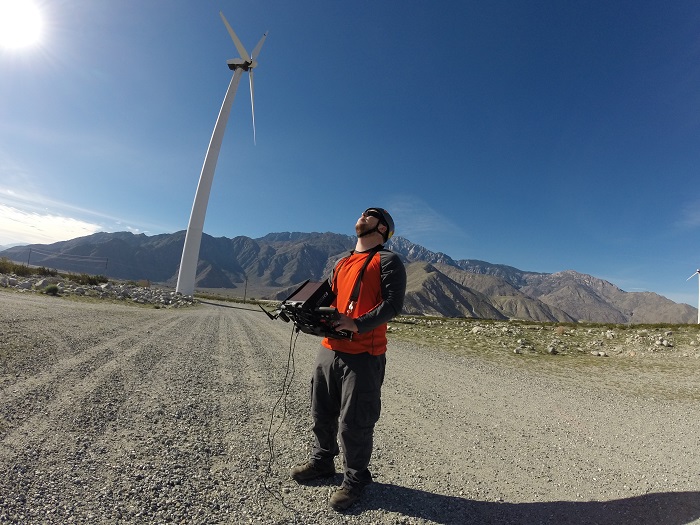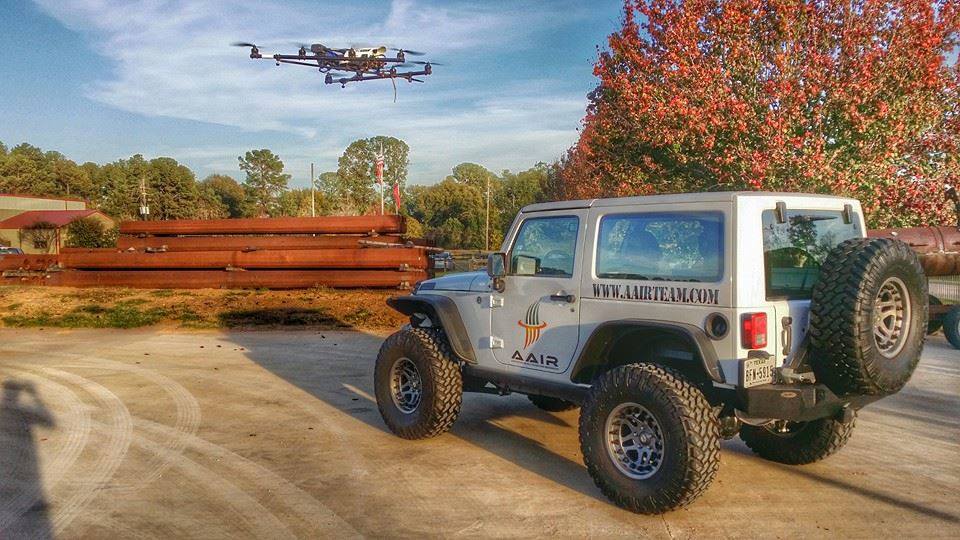It’s been a long time coming, but the FAA has finally released guidelines for commercial UAV operations that would allow unmanned aerial vehicles – drones – carry cameras to inspect wind farms and other utility infrastructure. The technology has been available for years. YouTube is full videos from hobbyists flying quad-copters with GoPros showing the world what their neighborhood looks like. Entrepreneurs immediately saw the potential: Inspect wind turbines blades and other hard to reach assets using high-resolution camera systems that are mounted on the UAVs. Reducing blade inspection cycle times would chip away at wind farm operating expenditures by minimizing equipment downtime. But for the last two years, the FAA dithered while UAV advocates marked time.
Now with federal approval, serious individuals, such as Grant Leaverton, General Manager with Advanced Aerial Inspection Resources, AAIR, are ready for take-off. Leaverton says his company has been in R&D mode for the last 2 years, preparing for the eventual green light from the FAA. The equipment being deployed includes 8-rotor UAVs that can carry 25-mega-pixel cameras aloft. Research on several other useful diagnostic sensors is also ongoing.
“Typically more rotors equal more stability for the platform which is critical for high clarity imaging. Weight extracts its cost in flight time; the heavier the payload, the shorter the flight time, you have to find the right balance for the mission requirement” he says.

The high-resolution image of a blade’s trailing edge clearly shows a crack in detail that will need repair.
“Our current capabilities represent the tip of the iceberg for industrial infrastructure inspections. They focus primarily on the high resolution visual inspection of blades, nacelles, utility and telecommunication towers, and other hard to reach assets,” says Leaverton. The new technology provides a first person view (FPV) perspective of exactly what the camera sees. When using a two-man crew, the camera operator might use FPV goggles or a separate monitor with a live video stream to facilitate image capture while the pilot focuses on visual line of site operation of the drone (VLOS), allowing for a more safe and efficient flight. Once the images are transferred to a computer , because of the high resolution you can drill down on any particular feature in the photo and get a better feel for the condition of the asset,” he says.
For now, blades will be the sweet spot for inspections in the wind industry. Until now, inspectors have relied on rope access, requiring a person to climb up and rappel down, or position a person in a crane or man bucket. Both options are expensive. And a telescope on the ground is less efficient from an equipment downtime perspective.

On a computer, a 25 megapixel image of this damage allows zooming in to see that the fiberglass shell has been exposed.
UAVs, however, seem to solve the inspection problem. The number of blades that can be inspected in a day depends on the type of inspection, “When focused on a particular feature, say the leading edge looking for erosion, you can easily inspect 8-10 rotor sets in a day depending on the height of the tower and length of the blade. If you want to cover every inch of blade, that of course takes more time,” says Leaverton. But that is still an improvement over traditional inspections with rope access or cranes.
Another plus: Using a UAV you can perform the inspection regardless of where the turbine rotor stops. “This is more of a personal preference issue. Because we are taking pictures lighting is always an issue. We get the best images with the blades pointing straight down in a 6 o’clock position. In a no-wind situation, you cannot turn or position the rotor, but with a UAV platform you can still do the inspection with high clarity,” he says.
While visual inspections are the obvious application, other sensors are getting auditions. One intriguing technology is infra-red. “When looking for internal defects that are barely subsurface, an infrared camera might reveal them. That’s the theory. Also, if the blade has delaminations, subsurface cracks, or wrinkles in the fiberglass, they could potentially show up as a heat signature. The thinking is that to detect such flaws they will have to be close to the surface and depend on the sensitivity of the equipment, as well as the ambient temperature around the asset. It is an interesting potential because internal defects are huge issues for owners. Those defects are hard to find and they can easily lead to catastrophic failures,” says Leaverton.
There are other facets of a wind farm that needs inspection too. “A lot of wind farm owners operate their own transmission lines and substations. Visual inspections are necessary along with infrared thermal imaging for detecting conductor hot spots or broken insulators. Another available sensor, UV camaeras, can detect corona discharges which would indicate broken hardware such as insulators and conductors,” he adds.

Soiling, bug splatter, and some leading edge erosion are clearly visible in the picture taken by an AAIR drone.
For utilities, keeping the right of way clear and unobstructed is critical. For example, it’s important to keep overhead lines free of vegetation, trees branches, overgrowth, and other encroachments.
Leaverton admits that a few things can be improved on the data management side. For example, knowing where one picture of hundreds came from. “Before starting an inspection, we must know which blade we are looking at and identify that somehow in our photo library. So before every flight, we identify the blade in question depending on the convention for that particular model. We photograph a dry erase board on which we make identifying notes, such as, Tower 1 – Blade 1. It’s crude but effective” he says.
Where a picture came from on the blade is also an issue so it would be good for the industry to agree on a method or guidelines. “The problem is blades have very few reference points or landmarks on them. Some have markings and others have lightning protection that can be used as reference. In absence of reference marks, we use geospatial tagging in each photo so we know the point in space at which each picture was taken,” he says. That works best when the blade is straight down.
Likewise, measuring the dimensions of defects is more art than science at this time. “You have to work from relative features of the blade and understand the width of the picture frame. It’s necessary to maintain a steady distance from the blade so you know, for instance, that each frame represents one meter of width. But that is imperfect so in reports, we relate damages with respect to each other rather than absolute measurement. At the end of the day your main priority is to identify the worst offenders so that the owner can more effectively allocate their repair budgets” says Leaverton. Lastly, the amount of data collected is enormous. “Even a small project can yield 500 GB’s of data,” says Leaverton. Much of the value in an inspection is how that data is stored, indexed, evaluated and delivered.
In the end, the goal is to better allocate repair dollars. “Owners can’t fix everything, but if we can identify the worst offenders, we have provided significant value in the form of conditional data that allows for optimal repair decision,” he says.
And stay tuned, says Leaverton. There is more to come. “It is only a matter of time before drones fly themselves autonomously. A simple sonar detector to measure and maintain the distance from an object and a little programming might be enough. Smart robots and autonomous operations would provide the ultimate in safe and efficient inspection operations.” Register here for a webcast with AAIR.

An AAIR technician keeps an eye on a drone during a test inspection.
The control panel includes a 7-in. screen so the pilot sees what the camera sees.
Filed Under: News, O&M






In response to the great interest in using drones for inspection of electrical installations, Ofil (www.ofilsystems.com) designed a compact corona camera called ROMpact which is dedicated to drones. ROMpact is a compact corona camera that images superficial partial discharges and transmits the images to a remote monitor. The imaging is stored for documentation and diagnosing electrical faults.